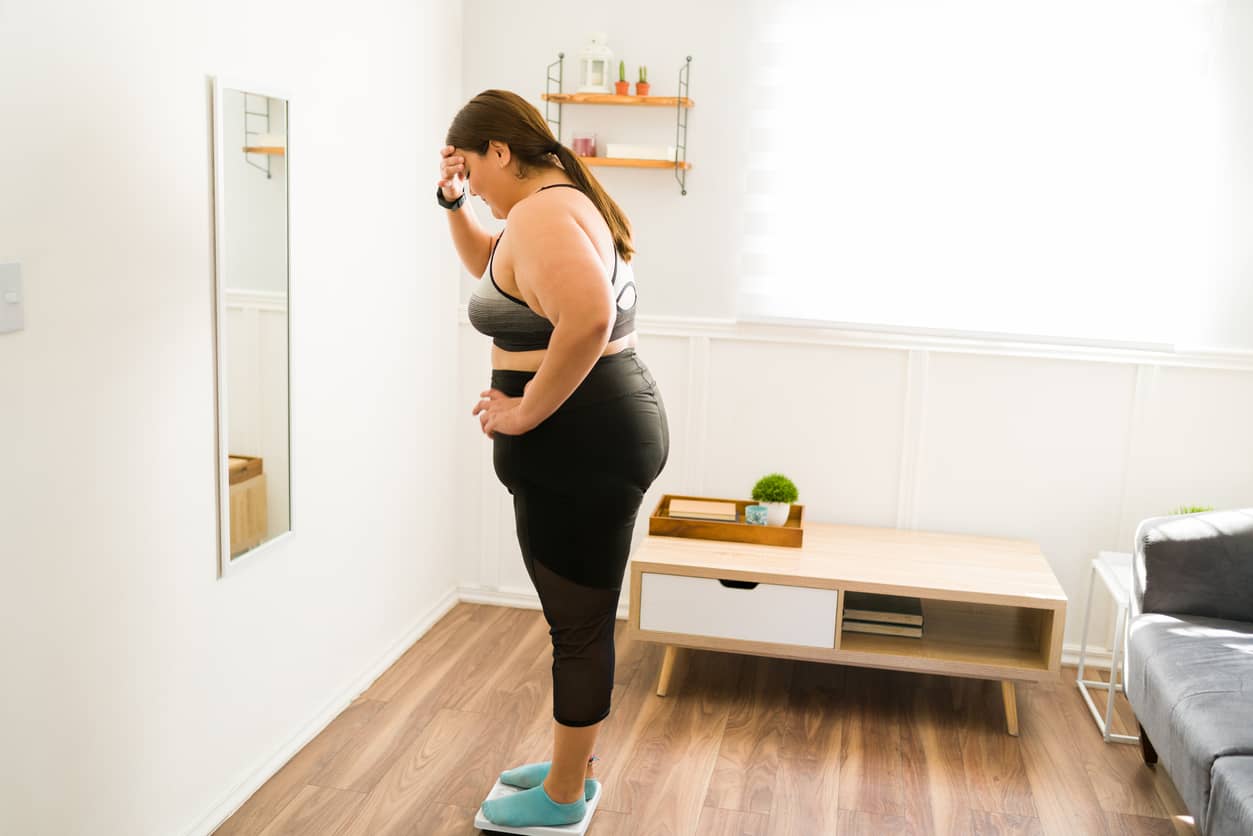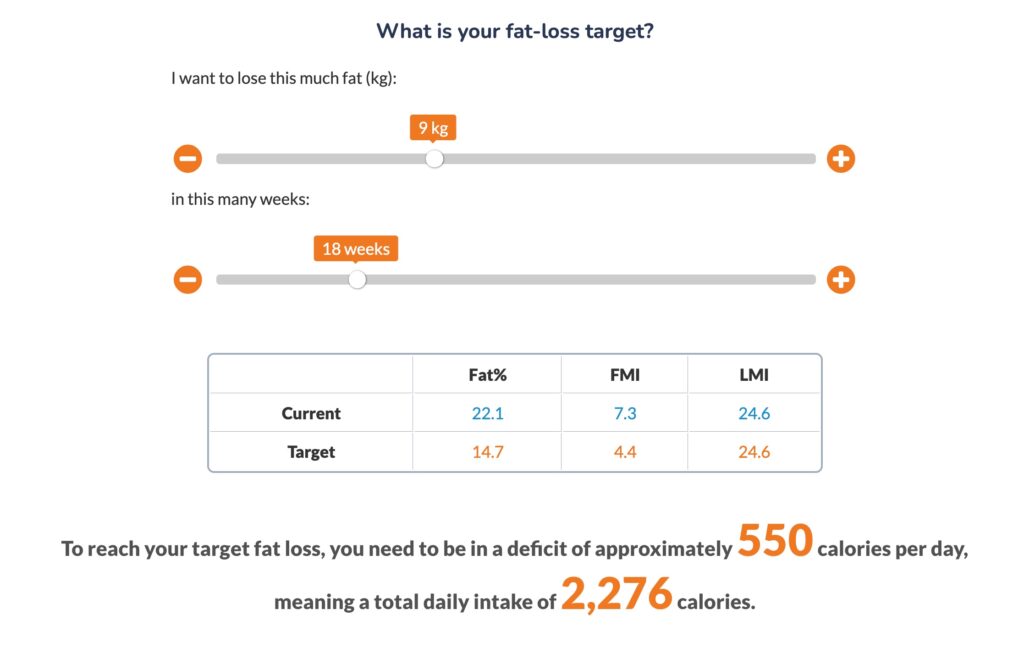
BLOG
How to set realistic weight loss goals

Most of us, at some stage in our lives, have probably said that we “need to lose some weight”, likely triggered by standing on the scale, feeling clothes getting tighter or perhaps the need to look at one’s best for a forthcoming holiday or a wedding.
But exactly how much weight should we lose? How do you set a realistic weight loss goal for yourself as an individual? What is healthy and achievable? How long will it take, how do we get there, and how do we keep the weight off once we’ve achieved our weight loss target? This article will answer all those questions.
Understanding weight and weight loss
First of all, let’s understand what we mean by ‘weight’ and why we should use it carefully when we talk about ‘losing weight’ and in terms of personal health.
Two people of exactly the same weight could have very different bodily make-ups. One could be a lean, muscular athlete; the other a high-fat, sedentary couch potato. Even though they tip the same weight on the scale, clearly only one of these individuals needs to “lose weight”.
Which leads us to conclude that we should talk less about losing weight than losing fat.
A realistic weight loss goal means you should not be looking to lose weight for weight’s sake, because if that weight comes from muscle, then that would not be a good outcome.
Conclusion: When you set yourself a weight loss goal, you should really be establishing a goal for fat loss.

Setting a realistic weight loss goal
It’s obvious from the above that to set a realistic weight loss goal, you need to understand your body composition – how much of you is fat and how much of you is muscle and lean body mass.
The best way to do that is with a DEXA body scan. Using very-low-dose X-rays, a DEXA scan will precisely measure fat, lean and bone mass and provide much more meaningful data than simply your weight on the scale.
DEXA provides two extremely important and very useful bits of data, known as your fat mass index (FMI) and lean mass index (LMI). They are, respectively, your fat and lean body mass in relation to your height. Height is an important factor because we’d expect tall people to carry more fat and muscle (and have higher overall mass) than shorter ones.
Having amassed data from more than 17,000 DEXA scans, Bodyscan has established “ideal” FMI and LMI figures for both sexes across all age groups and can therefore suggest meaningful targets for fat loss, muscle gain and, therefore, overall weight loss (or even, for those with low muscle mass, weight gain).
Achieving a fat mass index of between 3.5 and 5.5 for men and between 5.0 and 7.0 for women would represent realistic fat loss goals, depending on age and fat distribution.
You can see an example of Bodyscan’s DEXA fat loss calculator below that shows a man with an FMI of 7.3 can reach a target FMI of 4.4 by losing 9kg of body fat. Because of this man’s body composition (fat and lean mass) and his activity level, he should be able to achieve this fat loss in 18 weeks by consuming an average of 2,276 calories a day over that period.

Setting a realistic weight loss goal using an “ideal weight”
We do not recommend setting a goal for weight loss with a target weight or an “ideal weight”.
Target or “ideal” weights are usually plucked out of thin air, and they take no account of body composition. You may want to return to a weight you were ten years ago, which you felt was “right” for you, but what was your body composition (proportions of fat and muscle) at that time? It could be that you were low in muscle mass so a higher weight would actually be more “ideal”.
Setting a weight loss goal with body fat percentage
As for body fat percentage, which so many people regard as the holy grail of fat measurement, this is not a good number to use as a target. For one thing, it is not an absolute measure of body fat; it is simply the proportion of you that is fat. Which means that two people with the same body fat percentage could have wildly different amounts of fat and therefore very different body composition goals.
For example, a man who weighs 80kg and has 20kg of fat is 25% body fat. If he sets a target of 20% fat, he can do this in a number of ways as the image shows.

As we said above, setting a weight loss target by body fat percentage leads to wildly different amounts of fat, muscle and total body weight.
Visceral fat as a measure for fat loss
As well as the fat you can pinch (subcutaneous fat), we all carry some internal fat. At high levels, this internal (or ‘visceral’) fat builds up around the organs and can lead to life-changing obesity-related diseases such as heart disease, type-2 diabetes, stroke, colon cancer and even dementia.

A DEXA scan will reveal how much visceral fat you have and your risk level. If your visceral fat is high, we can set a realistic weight loss goal based on this, instead of or in addition to, your overall body fat.
A visceral fat result of below 100 is considered normal (though the lower the better). If your visceral result was 150, you would need to lose a third of it to get below 100. As visceral fat is metabolically active, it reduces at a faster rate than subcutaneous fat, so we might expect a 25% reduction in overall body fat to result in the one-third drop in visceral fat.
That would give us an easy and realistic fat-loss target: for someone carrying 25kg of fat, a healthier place to be would entail losing 25% of their total body fat, ie 6.25kg, almost exactly one stone.
What do we mean by a realistic weight loss target?
To be realistic, your weight loss goal needs to be achievable in the real world. Weight loss (fat loss) is best achieved gradually over a sustained period. Your excess fat didn’t accumulate overnight, so don’t expect it to disappear overnight.
By taking weight loss slowly, it becomes more an ingrained, habitual, sustainable lifestyle, rather than an arduous, get-it-out-over-and-done-with, flash-in-the-pain project.
Gradual, realistic weight loss also means you need to make only small changes in your lifestyle, rather than a complete handbrake turn. Cutting out a few snacks or sweets, eating off a smaller plate and walking round the block twice a day is a whole lot easier than preparing your meals for the week and getting up at six every morning to hit the gym! Be realistic about what changes you can make. We are not lab rats in a tightly controlled experiment; there will be good days and bad days, holidays, parties and takeaways, but keep your weight loss goal in mind and you will get there.
A rule of thumb for realistic weight loss is to lose about a pound (450g) of body fat a week. This is achieved by consuming a 500-calorie daily deficit, meaning 500 calories below ‘maintenance’. Maintenance is the number of calories you can eat at which your weight remains constant.
But if you have low muscle mass and are inactive, your maintenance calories may be too low from which to create a 500-calorie deficit without you going hungry. Therefore, you will need to consume at a smaller deficit and take longer to reach your weight loss goal, or – here’s your incentive to become more active – increase your daily level of activity.
Exercise is a small daily contributor to fat loss but over time, its cumulative effect is significant. In the calculator example above, the individual could reduce the time to lose 9kg of fat from 18 to 11 weeks or maintain the timeline and eat as much as 2635 calories a day.
During your consultation after your Baseline DEXA scan, your Bodyscan consultant will give you a better idea of what your activity level really is. Most people overestimate what they do (and underestimate what they eat) and, besides, when fat-loss is your goal, it’s a good idea to set your activity bar low to ensure you consume in a deficit.
Conclusions: Setting a realistic weight loss target
- Don’t aim to set a weight-loss target, set a fat-loss target
- Get a DEXA body scan to see how much fat you have and how much fat it is realistic to lose
- Achieve it with a sustained calorie deficit over time
- Add exercise to the mix to reduce the time or increase the amount you can consume
- Be realistic – you didn’t put the fat on overnight, it won’t come off overnight!


